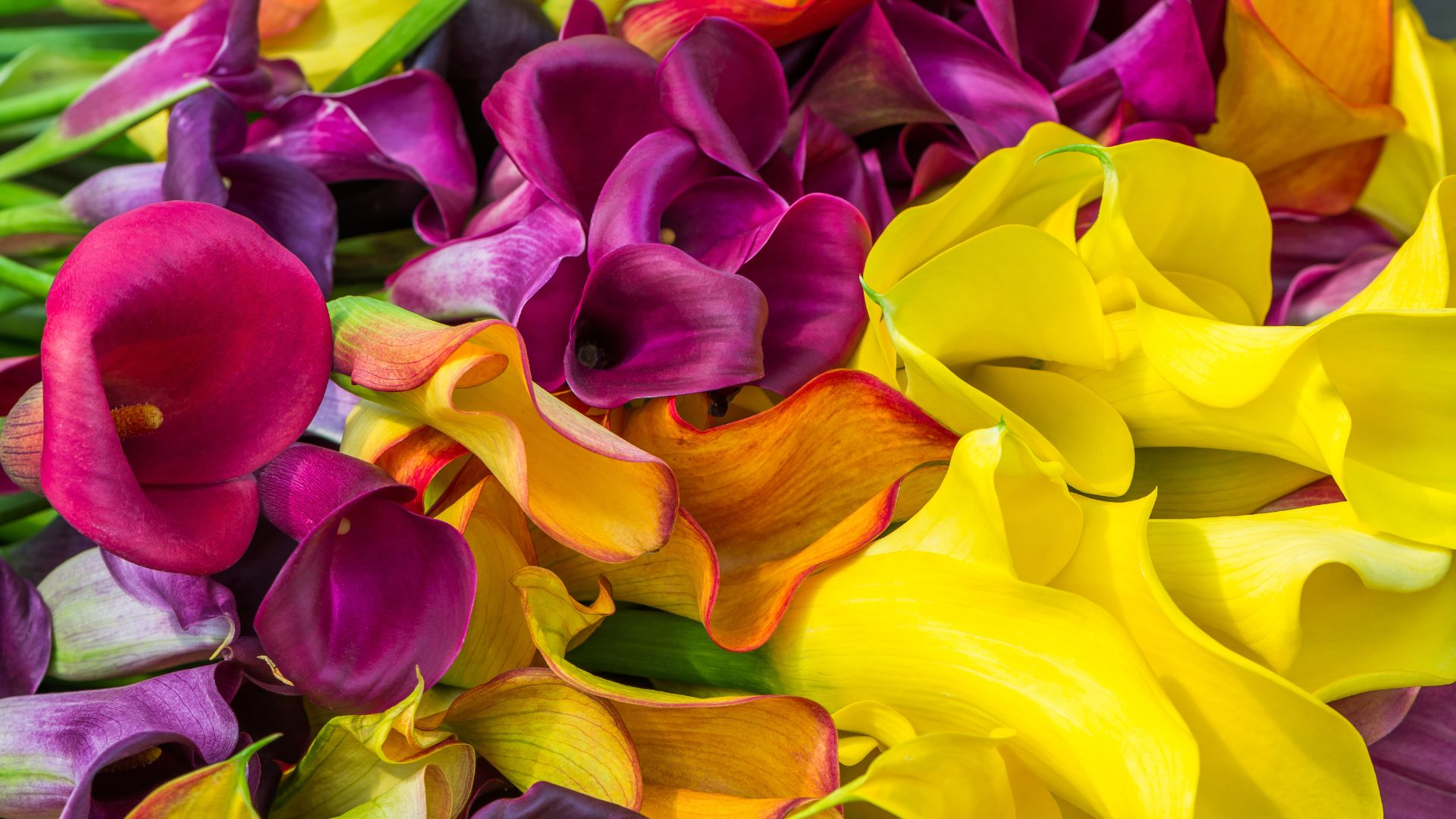Lilies, with their exquisite beauty and enchanting fragrance, have long been cherished as symbols of purity, elegance, and rebirth. These beautiful flowers have captured the hearts of gardeners, artists, and poets alike, inspiring countless creations and providing endless joy to those who appreciate their splendor.
Yet, have you ever wondered about the intricate inner workings of a lily? Today, we embark on a journey to explore the anatomy of these remarkable flowers, unraveling the secrets beneath their delicate .
By understanding their structure, we can gain a deeper appreciation for their beauty and a greater understanding of their fascinating evolution.
The Different Parts of a Lily Flower: Exploring Each Component's Role
The lily flower is a popular and beautiful choice for gardens, bouquets, and decorations. These elegant flowers come in various colors and sizes but share the same basic structure when you order lilies online.
-
Bulb: The planting lily bulbs is the underground storage organ of the lily plant. It stores nutrients and energy, allowing the plant to survive unfavorable conditions and regrow in the next growing season. The bulb also produces new plants through a process called vegetative propagation.
-
Stem: The stem supports the cut flowers and leaves, providing structure and stability. It transports water, nutrients, and sugars between the roots and the rest of the plant.
-
Leaves: Leaves are the primary site of photosynthesis in the lily plant. They capture sunlight and convert it into energy through photosynthesis, which helps the plant grow and produce flowers.
-
Flower: The flower is the reproductive structure of the lily plant. It consists of several parts, including:
-
Tepals: Tepals are the colorful, petal-like structures that make up the layer of the flower.
-
Stamen: The stamen is the flower's male reproductive organ, consist of an anther and a filament. The anther produces pollen, which contains the male cells (sperm).
-
Pistil: The pistil is the female reproductive organ, made up of the stigma, style, and ovary. The stigma is the sticky tip of the pistil that captures pollen from visiting pollinators.
-
-
Seeds: Seeds are formed in the ovary after successful fertilization. They contain the genetic material needed to grow a new lily blooms plant. Once the seeds mature, they are dispersed by various means, such as wind or animals, to find a suitable location for growth.
The Petals of a Lily Flower: Colors, Patterns, and Functions
The petals of lilies bouquet exhibit a variety of colors, patterns, and functions. Let's explore each aspect in more detail:
Colors: Lily flowers come in a wide range of colors, including white, yellow, pink, orange, red, and various shades. Some lilies even exhibit multiple colors, such as bi-colored or speckled petals. The color of the petals often serves as an important visual cue to attract.
Patterns: Lily petals can display various patterns and markings, which also attract. These patterns may include spots, stripes, or gradients that enhance the overall flower. The practices can guide pollinators toward the nectar or structures of the flower.
Functions: The petals of a lily flower serve several important functions:
a. Attracting pollinators: The vibrant colors and patterns of lily petals attract pollinators such as bees, butterflies, moths. These organisms are attracted to the flower's visual signals and are enticed to visit the flower for nectar or pollen. As they land on the petals and move around the flower, they transfer pollen from the stamens (male reproductive organs) to the pistil (female reproductive organ), aiding pollination.
The Intricate Design of a Lily's Pistil: Unraveling its Reproductive Purpose
The pistil of a lily flower is a crucial part of its reproductive system. It comprises three main parts: the stigma, style, and ovary. The stigma captures pollen from pollinators, while the style provides a pathway for the pollen to reach the ovary. The ovary houses the ovules, where fertilization occurs, in the production of seeds. The pistil's design ensures successful reproduction of the most lilies.
Delving into the Mysteries of a Lily's Stamens: Pollen Production and Dispersal
The stamen is the male reproductive structure of a lily flower. It plays a crucial role in the plant's lifecycle by producing and dispersing pollen, which contains the male reproductive cells necessary for fertilization.
The stamen consists of two parts: the anther and the filament. The filament is a long, thin stalk that supports the anther, a sac-like structure containing pollen. The anther's unique design and function enable it to produce and disperse pollen effectively.
Pollen Production: Lilies are known for producing large quantities of pollen, making them popular among beekeepers and pollen collectors. The anther produces the pollen grains containing the male cells (sperm). The anther is made up of four lobes, each containing pollen sacs. When mature, the pollen sacs open, releasing the pollen grains.
Pollen Dispersal: Once the pollen grains are mature, they need to be dispersed to other flowers. Lilies rely on pollinators, such as bees and butterflies, to carry their pollen from flower to flower.
Unlocking the Secrets of a Lily's Ovary: The Birthplace of Future Seeds
The ovary of a lily flower is a vital part of its process, responsible for the formation of future seeds. It contains ovules, the female reproductive cells containing the genetic material necessary for seed development. Pollination a series of events within the ovary, where the pollen tube delivers sperm to the ovules. Fertilization occurs when the sperm combines with an egg cell, forming an embryo.
The ovary protects the embryo and the endosperm, which develops from other cells within the ovule. Eventually, the ovule transforms into a seed, and the ovary may become a fruit or seed capsule, safeguarding theseeds. Dispersal of the mature seeds allows new lily plants to grow, continuing the species' life cycle.
The ovary's role is crucial in ensuring the survival and propagation of Easter lily or tiger lilies. It provides a nurturing environment for the development of embryos and seeds, safeguarding them from harm and supplying essential nutrients. Understanding the mysteries of a lily's ovary unveils the mechanisms behind seed formation and the remarkable journey of life in the plant kingdom.
The Role of Nectar Glands in a Lily Flower: Attracting Pollinators and Ensuring Reproduction
Nectar glands are a crucial component of a lily bulb flower's system. These structures produce a sweet and nutritious liquid that attracts pollinators and ensures the plant's reproductive success.
-
Attracting Pollinators: Nectar glands produce a sugary called nectar, which attracts pollinators like bees, butterflies, and hummingbirds to the flower. The nectar is typically located at the base of the tepals (petals and sepals) or in specialized nectaries within the flower structures.
-
Ensuring Reproduction: When a pollinator lands on a lily flower or garden lilies and begins to feed on the nectar, it brushes up against the stamens and pistil, transferring pollen from one flower to another. This process, known as cross-pollination, is essential for ensuring genetic diversity and successful fertilization. Nectar glands play a vital role in this process that help transfer pollen between flowers.
-
Protecting Against Predators: Nectar glands may protect the flower against predators besides attracting pollinators. Some species of lilies produce a toxic or bitter-tasting nectar that deters from eating the lilies.
The Stem of a Lily Flower: Providing Support and Transporting Nutrients
The stem of a lily flower is vital for the plant's structure and function. It supports the flower, leaves, and reproductive structures, ensuring they remain upright and intact. This includes in plant lilies like Asiatic lilies, trumpet lilies, Oriental lilies and Easter lilies
The stem also plays a crucial role in transporting water, nutrients, and other essential substances throughout the plant. It acts as a conduit, allowing water and nutrients to move from the roots to the rest of the plant, including the flowers and leaves.
Additionally, the stem serves as a site of energy storage, storing excess nutrients and energy for future use. It can sense and respond to cues, enabling the plant to adjust its growth and position itself for sunlight exposure optimally.
The Function of Leaves in a Lily Plant: Photosynthesis and Energy Production
Leaves in a lily plant are essential for photosynthesis and energy production. They contain chlorophyll, which captures sunlight and converts it into chemical energy through photosynthesis. Leaves also play a crucial role in gas exchange, absorbing carbon dioxide and releasing oxygen.
They facilitate water, pulling water from the roots and maintaining the plant's hydration. Some species lilies use leaves as storage organs for nutrients and energy reserves.
Additionally, leaves protect the plant by covering tender growing points them from environmental damage. Overall, leaves are vital for the growth of a lily plant fragrant blooms, it to thrive and produce energy for its various functions of the plants. Send lilies to your loved ones now!
Conclusion
It supports the entire plant, including the flower, leaves, and reproductive structures, and transports water, nutrients, and other essential substances throughout the plant to ensure its survival and growth. The stem also serves as a site of energy storage, allowing the plant to survive during periods of stress and unfavorable conditions. Additionally, the stem can sense and respond to cues, ensuring the plant can grow and position itself for optimal exposure to sunlight and other resources.
Overall, understanding the lilies is key to appreciating the complex and that allow these beautiful plants in their environments.







